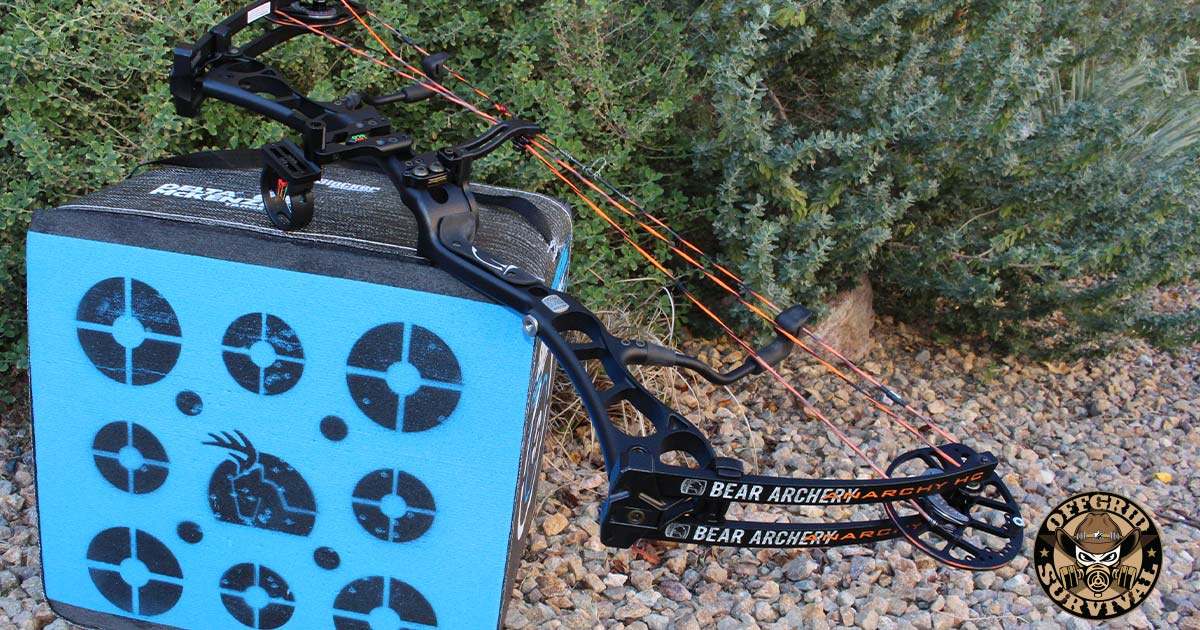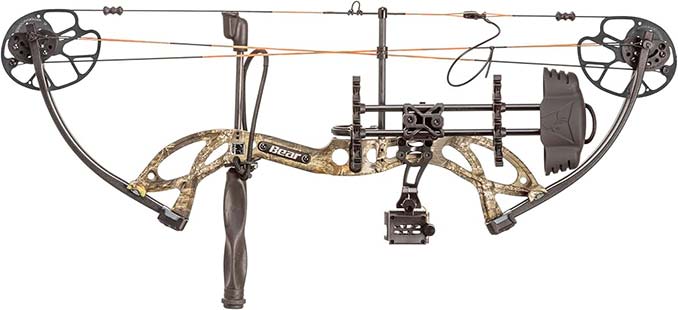
In a world where modern conveniences can quickly disappear in the blink of an eye, the ability to adapt and rely on your survival skills is becoming more apparent by the day. One such skill, often overlooked in favor of firearms, is archery. In a total all-out collapse situation, archery is a skill that can help you survive no matter how harsh conditions may become.
Picture a world plunged into chaos – a world where the comforts of modern civilization are mere memories. In this new landscape, food is scarce, threats lurk everywhere, and the ability to protect oneself and secure food becomes the ultimate currency.
It’s not a dystopian fantasy; it’s a scenario rooted in history and one that could be the future we are heading towards, thanks to the elites who wish to crash everything into the ground in some great reset fantasy. From natural disasters to societal collapse, numerous events could lead to a world where survival skills mean the difference between life and death.
But why should you learn to shoot a bow and arrow when firearms are readily available? Hey, no one is saying to give up your guns, but we like having options and having as many backups as possible. So here are five compelling survival-related reasons why mastering archery is worth your effort.
1. It helps Provide a Food Source
In times of crisis, securing food may become a challenging task. A bow is an invaluable tool for hunting game, including everything from deer to smaller prey like rabbits and birds – you can even retrofit your bow for fishing as well. Its stealth factor and ability to reclaim and use your arrows are what sets it apart from firearms. The quiet operation of a bow allows for stealthy hunting, increasing your chances of success without giving away your position.
The ability to hunt game silently could be a game-changer. Additionally, as we pointed out above, bows can be used for bow fishing, a versatile hunting method to catch fish silently.
2. Portability
Survival scenarios often demand mobility and adaptability. Traditional bows, mainly takedown bows, excel at this task. Takedown bows can be disassembled into compact pieces, making them easy to transport even when you need to travel light. A takedown bow can be your trusted survival companion when space and weight are at a premium.
3. Low Cost
In these turbulent times, budget-conscious choices are essential. You can acquire a reliable takedown bow or compound bow without breaking the bank. The affordability extends to ammunition – arrows are cost-effective and, with practice, reusable. Unlike firearms, where ammunition can be scarce, archers can even craft their arrows using readily available materials.
4. Less Paperwork and Less Strict Laws
Owning a firearm often comes with a maze of regulations and paperwork. Archery, in contrast, involves fewer legal hurdles. While there are some rules to follow, they are generally less restrictive than those governing firearms. Archery offers a more straightforward path to self-reliance.
5. Improved Fitness Levels
Survival situations demand physical fitness. Archery can contribute to your overall fitness by enhancing your upper body strength through drawing the bowstring and burning calories as you retrieve arrows. It’s a practical way to stay in shape while honing a crucial survival skill.
Types of Bows and Which Is Best for Survival

What bow you choose will ultimately come down to you. From being able to comfortably use it to portability and cost factors, everyone will have different reasons for deciding what type of bow they ultimately choose. So let’s let’s explore the common types of bows available and their respective strengths and weaknesses.
1. Longbow
The longbow, often associated with medieval times, is a straightforward design – a single piece of wood with a string attached from end to end. Longbows offer impressive speed and power but require considerable strength to draw. Due to their size, they are less portable.
2. Recurve
Recurve bows, resembling longbows with curved limbs, are known for their energy efficiency, delivering both power and speed. Many recurve bows are takedowns, allowing for easier transport. They are also far easier to find, and come with a number of different options since they are often used in competition. Like a longbow, if you are using this for hunting where you need a lot of power for a kill, they demand substantial upper body strength.
3. Compound
Compound bows feature a modern, mechanical design with cams and pulley systems. They offer power and accuracy, but their complexity can be a disadvantage in survival scenarios. They are not takedowns, making transport more challenging, and mechanical parts can break. For us, we favor the compound, but if you go this route you are going to need to spend sometime understanding what will be needed to keep it up and running in a survival situation.
4. Crossbow
Crossbows are hybrids, combining elements of bows and firearms. They provide power and ease of aiming but come with complex mechanisms that can malfunction. Loading some crossbows can be physically demanding.
The Recommended Choices for Survival: Recurve and Compound Bows
I want to reiterate, that when it comes to choosing the right bow, there really is no right or wring answer. It really comes down to one thing — the best weapon is the one that you are proficient with. And on that note, whatever you choose, you are going to need to practice. You cannot pick up a bow and expect to kill anything without extreme luck.
When it comes to selecting a bow for survival, for us, two options stand out: the recurve bow and the compound bow. Each has its unique advantages, making them valuable additions to our survival toolkit.
Recurve Bows:
The recurve bow offers simplicity, reliability, and portability, making it an excellent choice for survivalists. Many recurve bows are takedowns, allowing for easy transport in challenging scenarios. While they demand some upper body strength, their straightforward design means fewer mechanical parts that can break. The recurve bow strikes a balance between power and portability, making it an ideal choice for those who prioritize adaptability and mobility in survival situations.
Compound Bows:
On the other hand, compound bows offer a modern twist to archery and are what most hunters use in the real world. They boast exceptional power and accuracy, thanks to their advanced cam and pulley systems. While they are not takedowns and can be less portable, compound bows compensate with their ease of use and enhanced aiming capabilities. The “let off” feature reduces the holding weight, allowing for extended aiming, which can be advantageous in self-defense scenarios. Compound bows are an excellent choice for those who value precision and reliability in their survival equipment.

A great all around Compound Bow is the Bear Archery Cruzer G2. It’s highly adjustable so it not only akes a great bow for those getting started, but a good all around bow for a group or a family.
Survival Archery Gear and Maintenance:
Having the right gear and tools to maintain your equipment will become an important lifeline in the world of survival archery. Here’s a rundown of essential items and maintenance tips to keep you at the top of your game:
Bows: Whether you choose a recurve or compound bow, you need to maintain it and ensure it is ready to go when needed. Strings, limbs, and cams must be regularly inspected and maintained. Learn string replacement and tuning techniques – knowledge is your ammunition.
Arrows: Crafted from quality materials, equipped with broadheads, and fletched for accuracy, they are your lifeline. Keep an ample supply, and practice crafting your own in case the shit hits the fan.
Accessories: Bow sights, quivers, and arrow rests can enhance your accuracy and help while out on the hunt. Familiarize yourself with these tools, but remember – the true skill lies within you, not your gear.
Field Repair Kit: The ability to fix your equipment in the field is important. Pack extra strings, nocks, and tools in a compact repair kit.
Hunting and Food Procurement with Survival Archery

Mastering the art of hunting and food procurement through archery can be a vital skill, one that might just save your ass during a long-term collapse scenario. Whether you find yourself in a wilderness survival situation, navigating a post-apocalyptic world, or simply seeking an alternative means of putting food on the table, archery is a versatile and effective preparedness skill.
Hunting Strategies and Techniques:
Survival archery begins with understanding effective hunting strategies and techniques. Unlike firearms, bows provide the advantage of silent hunting, allowing you to get closer to your prey without giving away your position. That being said, stalking a skill and not something you can just go out there and do without proper training and practice.
Here are some key strategies to consider:
Stalking: Moving like a survival ninja through the terrain while keeping a low profile is essential for closing the distance between you and your prey. Camouflaged clothing and a good understanding of animal behavior are valuable assets.
Wait & Ambush: Setting up ambush points near known game trails or feeding areas increases your chances of a successful hunt. Use natural features for concealment and wait patiently for the right opportunity. Slow and deliberate movement through the wilderness, combined with keen observation, can lead to better success finding game.
Bowfishing: In aquatic environments, bowfishing combines archery with fishing. It allows you to target fish and other aquatic creatures using specialized fishing arrows. This skill can provide an additional source of food.
Game Animals and Their Behavior:
It is important to understand the behavior of the game animals you’re targeting. Different animals have distinct habits, habitats, and vulnerabilities. Here are some common game animals and key insights into their behavior:
Deer: Deer are often the primary target for bowhunters due to their prevalence and relatively large size. They are most active during dawn and dusk.
Small Game: Animals like rabbits, squirrels, and birds are ideal for survival hunting because they are plentiful and easier to track. Learn their feeding and nesting patterns.
Fish: Bowfishing targets fish such as carp, catfish, and gar. Understanding underwater habitats, water clarity, and fish movements is essential for success.
In uncertain times, mastering archery with either a recurve or compound bow can be the key to securing food, defending against threats, and adapting to the challenges ahead. While both have their merits, your choice ultimately depends on your specific survival needs and preferences. Whether you opt for the simplicity and portability of the recurve bow or the precision and power of the compound bow, archery remains a valuable skill that can enhance your self-reliance in a world where survival is paramount.



Love my bows. I also love my Wrist-Rocket Slingshot and marbles for ammo. I also keep 3 large rat traps for catching small game if needed.